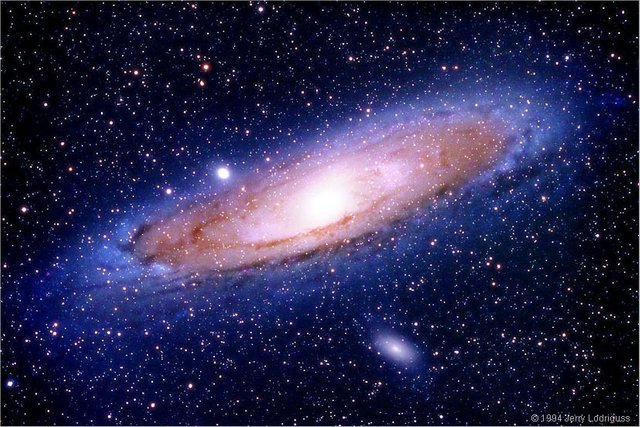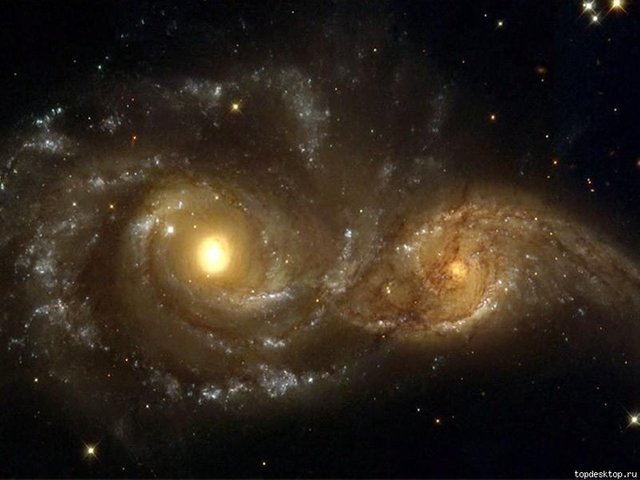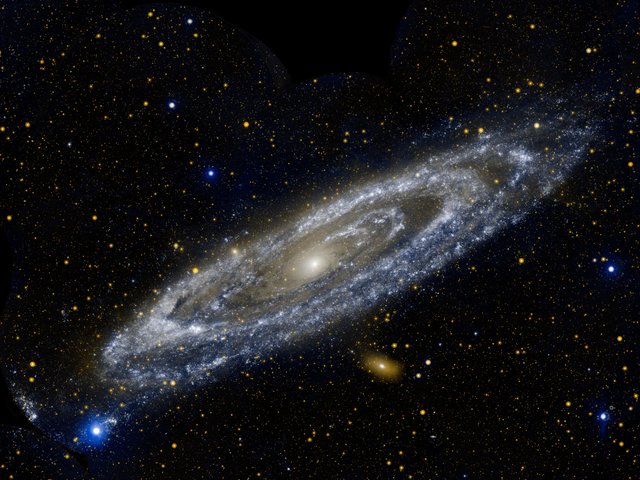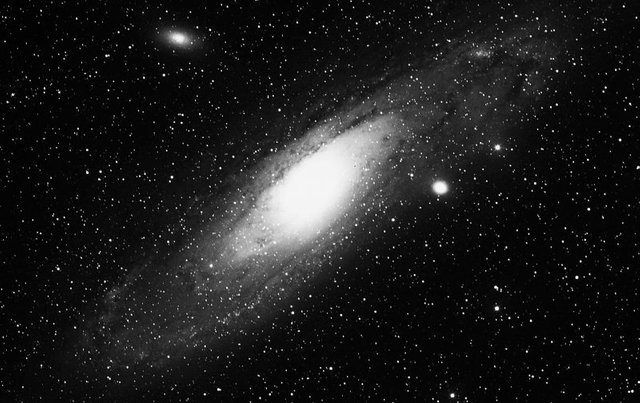Galaxy Andromeda - a Galaxy that is part of the Local Group of Galaxies
Galaxy Andromeda: also known as Galaxia Spiral M31, Messier 31 or NGC 224, is a spiral galaxy with a diameter of two hundred twenty thousand light years (as far as its galactic halo is concerned) and about one hundred and fifty thousand light years between the ends of its arms . It contains approximately a number of stars similar to our own galaxy.
It is part of the "Local Group of Galaxies", which contains two large spiral galaxies: Andromeda and the Milky Way.
Andromeda is the most studied galaxy, because it is possible to observe in it, from the outside, all the features of a galaxy: spiral structure, globular and open clusters, interstellar material, planetary nebulae, supernova remnants and the galactic nucleus.
It has been observed that Andromeda and the Milky Way are rapidly approaching each other with speeds of about 500,000 km / hour. This means that there would be a collision between the two within about 3,000 million years. If it occurs, such a shock should not be understood as taking place between two solid bodies, but rather that the galaxies would cross each other. As a result, some of the material from both would disperse and the rest would form a giant elliptical galaxy.
It was observed by the Persian astronomer Abd-al-Rahman Al-Sufi who described it and drew it in 964 AD. in his "Book of the fixed stars". It is known that it also appeared on a Dutch star map of the year 1500.
For a long time it was believed that the "Great Andromeda Nebula" was much closer. William Herschel believed, wrongly of course, that his distance did not far exceed the distance to Sirius (17,000 light years); I saw it as the closest "universe-island", similar to our Milky Way.
Location of the Andromeda Galaxy:
The galaxy of Andromeda is an object that we can get to appreciate at a glance, even if it is located 2.5 million light years away, with a direction that points towards the Andromeda constellation. To be able to locate it more easily, we must find
the square of Pegasus, and hence its location will be easier. It can be observed from the earth with an aspect of oval elongated, small and with very diffuse peripheries, at the same time provided with a lot of light.
Structure of the Andromeda Galaxy:
The Andromeda galaxy has a double structure, it also has two hot nuclear points that are separated by a few light years.
Some observations have noted that the nuclei they possess can move with respect to each other and that these nuclei have been decomposing over the years.
Andromeda is charged with neutral hydrogen so that the formation of the stars is continuous and effective. It has a large number of satellite galaxies, and many of them are in the same plane.
Planets of the Andromeda Galaxy:
Several scientists have tried by means of gravitational lenses to detect different planets in the Andromeda galaxy. The only objects similar to a planet that they have been able to identify have a weight of 6 or 7 times what weighs Jupiter. Astrologers and scientists suspect that this could be the first planet in the Andromeda galaxy.
https://www.euston96.com/galaxia-de-andromeda/




Source: https://steemit.com/steemstem/@josealbertomg71/andromeda-the-closest-galaxy-to-earth-know-its-history-and-structure-here-we-explain
Not indicating that the content you copy/paste is not your original work could be seen as plagiarism.
Some tips to share content and add value:
Repeated plagiarized posts are considered spam. Spam is discouraged by the community, and may result in action from the cheetah bot.
Creative Commons: If you are posting content under a Creative Commons license, please attribute and link according to the specific license. If you are posting content under CC0 or Public Domain please consider noting that at the end of your post.
If you are actually the original author, please do reply to let us know!
Thank You!
I got one question: Are the inhabitants of Andromeda galaxy cool with plagiarism? If yes then please do us a favour and move to Andromeda. You already got flagged for plagiarism in your last post but you clearly haven't learned anything from that.
nice post